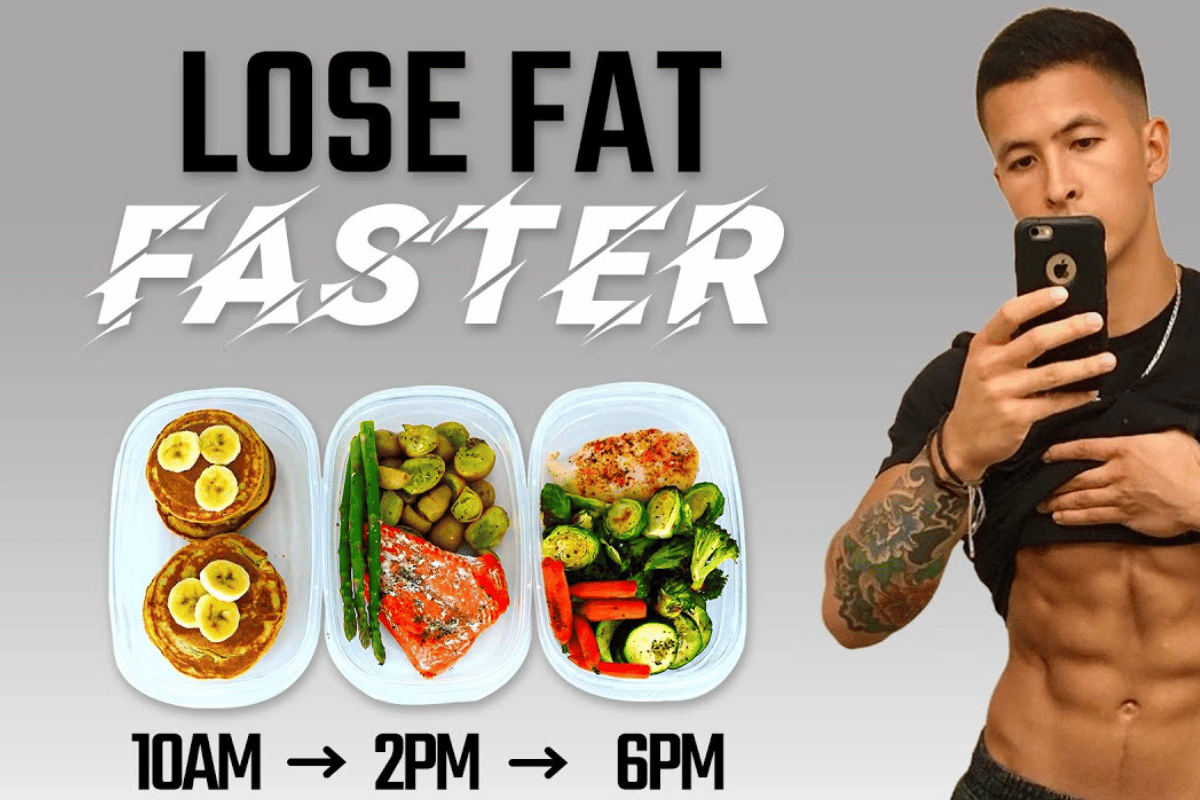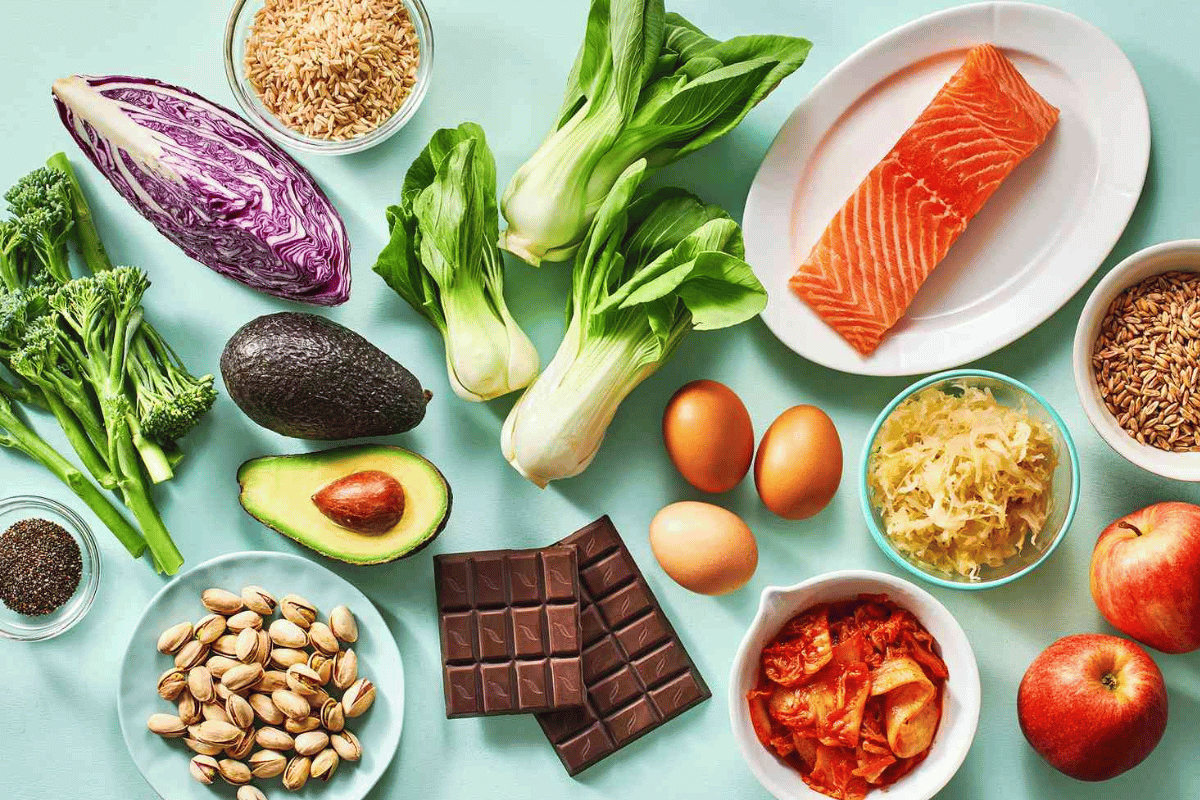Welcome to a fresh start in 2024, where we’re all geared up to embark on a journey towards a healthier and slimmer you! This article is your go-to guide for achieving your weight loss goals with a twist – we’re focusing on delicious and nutritious smoothie recipes to lose weight. And guess what? We have a special treat in store for our Canadian readers, as we’ll be diving into how these smoothie wonders can be your January special. So, let’s blend our way to a healthier you!
Now, let’s dive right in and discover the world of weight-loss smoothies that will kickstart your year in the most refreshing way possible.
Benefits of Smoothies for Weight Loss
Smoothies have taken the health and fitness world by storm, and for good reason. These blended concoctions offer a plethora of benefits when it comes to shedding those extra pounds and maintaining a healthy lifestyle. Here’s why you should consider incorporating smoothies into your weight loss journey:
1. Nutrient-Packed Powerhouses: Smoothies are like nutrient bombs, delivering a hefty dose of vitamins, minerals, and antioxidants. They provide your body with essential nutrients it needs to function optimally while keeping calorie counts in check.
2. Satiety in a Glass: One of the secrets to successful weight loss is managing hunger. Smoothies can be incredibly filling due to their fiber content. Fiber keeps you feeling full and satisfied, reducing the temptation to snack on less healthy options.

smoothie recipes to lose weight
3. Convenient and Time-Saving: In today’s fast-paced world, convenience matters. Smoothies are the ultimate grab-and-go meal. You can whip up a nutritious smoothie in minutes and enjoy it on your way to work or as a post-workout recovery snack.
4. Versatile and Customizable: The world of smoothies is virtually endless. You can tailor your smoothie recipes to suit your taste and dietary preferences. Whether you’re a fan of green smoothies, fruity blends, or protein-packed powerhouses, there’s a smoothie recipe for everyone.
5. Hydration and Detox: Staying hydrated is crucial for weight loss, and smoothies can help with that too. Many ingredients, like cucumber and watermelon, have high water content, keeping you hydrated throughout the day. Additionally, smoothies can contain detoxifying ingredients like leafy greens and lemon, promoting the removal of toxins from your body.
6. Portion Control: Smoothies make portion control a breeze. You have complete control over the ingredients and quantities, ensuring you’re not overeating.
As we explore further into this article, you’ll discover how these benefits translate into practical and delicious smoothie recipes that can kickstart your weight loss journey in the best possible way. So, let’s blend our way to a healthier and slimmer you!
Key Ingredients for Weight-Loss Smoothies
Now that we’ve covered why smoothies are fantastic for weight loss, let’s dive into the heart of these delicious concoctions: the key ingredients that will make your smoothies not only slimming but also scrumptious. To craft the perfect weight-loss smoothie, you’ll want to pay attention to the following essential components:
1. Leafy Greens: These nutritional powerhouses are low in calories and high in vitamins, minerals, and fiber. Spinach, kale, and Swiss chard are fantastic choices. They add volume and nutrition without extra calories.
2. Fruits: Fruits bring natural sweetness and a burst of flavor to your smoothies. Berries, bananas, apples, and citrus fruits like oranges and grapefruits are popular options. Their fiber content aids in satiety.
3. Protein: Protein is your ally in weight loss. It helps maintain muscle mass and keeps you feeling full. Opt for protein sources like Greek yogurt, silken tofu, or plant-based options like pea protein or hemp seeds.
4. Healthy Fats: Don’t shy away from fats; they can be your friend. They add creaminess and satiety to your smoothie. Avocado, chia seeds, flaxseeds, and nut butter are excellent choices for healthy fats.
5. Liquid Base: You’ll need a liquid to blend your ingredients smoothly. Opt for unsweetened almond milk, coconut water, or even plain water to keep the calorie count in check.
6. Sweeteners (Optional): If your smoothie needs an extra touch of sweetness, consider natural sweeteners like honey, agave nectar, or a medjool date. Use these sparingly to avoid excess calories.
7. Spices and Flavorings: To enhance the taste of your smoothie, experiment with spices like cinnamon, ginger, or vanilla extract. These can elevate the flavor without adding empty calories.
8. Ice or Frozen Ingredients: For that refreshing chill factor, add ice cubes or frozen fruits. They not only make your smoothie frosty but also add thickness.
Remember, the key to creating weight-loss-friendly smoothies is balance. Aim for a combination of leafy greens, fruits, protein, and healthy fats to create a well-rounded and satisfying blend. In the upcoming sections, we’ll put these ingredients to good use with some mouthwatering smoothie recipes that will make your taste buds dance while supporting your weight loss goals. Stay tuned for a delightful and slimming experience!
Popular Smoothie Recipes to Kickstart 2024
Now that we’ve explored the essential components of weight-loss smoothies let’s get to the fun part – whipping up some delicious and nutritious concoctions that will kickstart your 2024 in the healthiest way possible. These three smoothie recipes are not only packed with flavor but are also designed to help you shed those extra pounds.
Recipe 1: Berry Blast Smoothie
Ingredients:
- 1 cup of mixed berries (strawberries, blueberries, raspberries)
- 1/2 ripe banana
- 1/2 cup of Greek yogurt (or plant-based yogurt)
- 1/2 cup of unsweetened almond milk
- 1 tablespoon of chia seeds
- A handful of spinach leaves
- Ice cubes (optional)
Instructions:
- Add the mixed berries, banana, Greek yogurt, almond milk, chia seeds, and spinach to a blender.
- If you like your smoothie extra cold, toss in a few ice cubes.
- Blend until smooth and creamy.
- Pour into a glass and garnish with a few fresh berries and a sprinkle of chia seeds.
- Enjoy your antioxidant-rich, fiber-packed berry blast!
Recipe 2: Green Goddess Smoothie
Ingredients:
- 1 cup of fresh spinach leaves
- 1/2 ripe avocado
- 1/2 cup of sliced cucumber
- 1/2 cup of pineapple chunks
- 1 tablespoon of honey (optional for sweetness)
- 1/2 cup of water
- Ice cubes
Instructions:
- Place the spinach, avocado, cucumber, pineapple, honey (if desired), and water in your blender.
- Add ice cubes for a refreshing chill.
- Blend until silky and green.
- Pour into a glass and garnish with a slice of cucumber.
- Sip on this green delight packed with vitamins, healthy fats, and hydration.
Recipe 3: Tropical Paradise Smoothie
Ingredients:
- 1/2 cup of mango chunks
- 1/2 banana
- 1/4 cup of sliced pineapple
- 1/4 cup of Greek yogurt (or coconut yogurt for a tropical twist)
- 1/2 cup of coconut water
- A handful of baby spinach
- Ice cubes
Instructions:
- Combine mango, banana, pineapple, Greek yogurt, coconut water, and baby spinach in your blender.
- Toss in a few ice cubes for that island breeze feel.
- Blend until you achieve a smooth and creamy texture.
- Pour into a glass and add a tiny umbrella for flair.
- Transport yourself to a tropical paradise with this vitamin C-rich smoothie.
Feel free to customize these recipes according to your preferences. You can adjust sweetness levels with natural sweeteners or add a scoop of protein powder for an extra boost. These smoothies not only taste fantastic but are also fantastic companions on your weight loss journey.
In the following sections, we’ll delve into the specific benefits of these smoothies and how they can be seamlessly integrated into your daily routine to help you shed those pounds and feel your best. Stay tuned for a healthier and happier you!
3 Healthy Breakfast Smoothies | High Protein | Low Carb I Weight Loss
January Special for Canadians
Now, you might wonder, why is this article a January special for Canadians? Well, Canada’s winters are notorious for their cold and often harsh nature, making it a challenging season for weight loss. But fear not, because we’ve got you covered with these smoothie recipes tailored to suit the Canadian winter and the availability of seasonal ingredients.
In January, Canada is abundant with fresh produce that can be incorporated into your weight-loss journey. While the weather outside might be frightful, your smoothies can be delightful. Here are some seasonal ingredients that Canadians can make the most of:
1. Apples: Canadian orchards produce some of the finest apples during the fall, and they are readily available well into January. Apples can add natural sweetness and fiber to your smoothies.
2. Kale: This leafy green is known for its hardiness, and it thrives in cold temperatures. Kale is packed with nutrients and can be a great addition to your winter smoothies.
3. Cranberries: These tart gems are a staple in Canadian Thanksgiving meals, and their harvest extends into January. Cranberries can add a tangy twist to your smoothie recipes.
4. Citrus Fruits: Oranges, grapefruits, and lemons are in season during the winter months. They can provide a burst of vitamin C to your smoothies.
5. Beets: Root vegetables like beets are available in abundance. They are not only nutritious but can also add a vibrant hue to your smoothies.
By making the most of these seasonal ingredients, you can create smoothies that are not only delicious but also tailored to the Canadian winter. Whether you’re facing a snowy morning in Toronto or a chilly evening in Calgary, these recipes will help you stay on track with your weight loss goals.
In the following sections, we’ll delve into practical tips for incorporating these smoothies into your daily routine and explore the inspiring success stories of individuals who achieved their weight loss goals through the power of smoothie recipes. So, if you’re a proud Canadian looking to embrace a healthier lifestyle this January, keep reading for a taste of what’s to come!
Tips for Incorporating Smoothies into Your Daily Routine
Now that you’ve been introduced to the wonderful world of smoothies tailored for weight loss, it’s time to discuss how you can seamlessly incorporate these nutritious and delicious concoctions into your daily routine. Here are some practical tips to help you make the most of your smoothie journey:
1. Start with a Morning Ritual: Mornings are often rushed, but dedicating just a few extra minutes to prepare a satisfying smoothie can set a positive tone for the day. Consider making it a daily ritual to kickstart your morning with a nutrient-packed smoothie.
2. Plan Ahead: Planning is key to success. Decide in advance which smoothie recipe you’ll enjoy for the day. This prevents last-minute unhealthy choices and ensures you have all the ingredients on hand.
3. Pre-Pack Ingredients: To save even more time, pre-pack smoothie ingredients in individual portions. Place them in zip-lock bags or containers, so all you need to do is grab, blend, and go.
4. Experiment with Variations: While the recipes provided are delicious as is, don’t be afraid to experiment. Add a handful of spinach for extra greens, a scoop of protein powder for more satiety, or a dash of cinnamon for added flavor.
5. Portable Smoothie Cups: Invest in a good-quality, portable smoothie cup or blender bottle. These make it easy to take your smoothie with you, whether you’re headed to work, the gym, or running errands.
6. Make It a Snack: Smoothies aren’t limited to breakfast. They make excellent snacks too. When you’re feeling peckish between meals, reach for a smoothie instead of unhealthy snacks.
7. Stay Hydrated: Smoothies can be hydrating, but don’t forget to drink water throughout the day. Staying properly hydrated is essential for overall health and can support your weight loss efforts.
8. Accountability Buddy: Consider involving a friend or family member in your smoothie journey. Sharing recipes and progress can provide motivation and accountability.
9. Keep It Sustainable: Weight loss is a journey, not a race. Make sure your smoothie routine is sustainable for the long term. It should complement your lifestyle, not disrupt it.
10. Enjoy the Process: Finally, don’t forget to savor the process of making and enjoying your smoothies. The act of preparing and sipping on a delicious, healthy smoothie can be a joyful experience.
By following these tips, you can seamlessly integrate smoothies into your daily life, making them a valuable tool on your weight loss journey. Whether you’re a busy professional, a parent on the go, or simply someone looking to improve their health, these strategies will help you make the most of these nutritious concoctions.
In the next section, we’ll dive into inspiring success stories of real individuals who achieved their weight loss goals with the help of these smoothie recipes. Their stories will demonstrate that with determination and the right recipes, achieving a healthier lifestyle is not only possible but also enjoyable.
Success Stories: Real-Life Examples
Embarking on a weight loss journey can be challenging, but it’s always inspiring to hear success stories from real individuals who have achieved their goals. Here are the stories of two remarkable individuals who transformed their lives with the help of these smoothie recipes.
1. Sarah’s Journey to a Healthier Self
Sarah, a 34-year-old marketing executive, had struggled with weight issues for most of her adult life. She found it challenging to maintain a healthy diet due to her busy work schedule and frequent business trips. Her weight had started affecting her self-esteem and overall well-being.
Sarah decided to make a change in her life in early 2023 when she stumbled upon the world of weight-loss smoothies. She began her mornings with a nutritious smoothie, often opting for the “Green Goddess” recipe. This gave her the energy and satiety needed to power through her demanding workdays.
Incorporating smoothies into her daily routine became a game-changer for Sarah. She started shedding pounds steadily, and her increased energy levels motivated her to incorporate more physical activity into her life. Within six months, Sarah lost 30 pounds and felt better than she had in years.
2. Mark’s Transformation to a Healthier Lifestyle
Mark, a 42-year-old teacher and father of two, had let his health take a backseat for years while prioritizing his family’s needs. He realized that his sedentary lifestyle and poor eating habits were setting a bad example for his children and putting his health at risk.
In January 2022, Mark made a New Year’s resolution to lead a healthier life. He discovered the “Berry Blast” smoothie recipe and decided to make it a part of his daily routine. Mark involved his kids in the process, and they enjoyed blending up these colorful, fruity concoctions together.
As the months passed, Mark’s weight steadily decreased, and he noticed increased stamina and a better mood. He began taking family hikes on weekends and encouraged his children to make healthier food choices. By December of the same year, Mark had lost an impressive 45 pounds, and his family had adopted a more active and nutritious lifestyle.
These success stories illustrate the transformative power of incorporating smoothie recipes into one’s daily routine. Both Sarah and Mark achieved their weight loss goals while enjoying the process and improving their overall health. Their stories serve as inspiration for anyone looking to embark on a similar journey to a healthier self.
In the concluding section, we’ll summarize the key points discussed in this article and encourage readers to embrace the potential of these smoothie recipes as a valuable tool on their own path to better health and weight management.

smoothie recipes to lose weight
In conclusion, this article has explored the world of weight-loss smoothie recipes, focusing on their potential to help individuals achieve their health and fitness goals. We’ve discussed the numerous benefits of incorporating these delicious and nutritious smoothies into your daily routine, from aiding in weight loss to providing essential nutrients and convenience.
As we embark on the journey into the new year, it’s an opportune moment to consider making positive changes in our lives. One such change can be adopting these smoothie recipes as a part of your New Year’s resolution. Whether you’re looking to shed a few pounds, boost your energy levels, or simply enjoy a tasty and healthy treat, these recipes have something to offer everyone.
Remember that success stories like Sarah’s and Mark’s highlight the real potential of these smoothies in transforming lives. By integrating these recipes into your daily life, you can set yourself on a path to a healthier and happier you. So, why not make a commitment to embrace the January special and incorporate these smoothies into your own journey toward a healthier and more fulfilling lifestyle?
In the spirit of a fresh start, we encourage you to take action, experiment with these recipes, and make 2024 a year of positive change and wellness. Here’s to a healthier you in the months ahead!
References and Further Reading
- Harvard Health Publishing – “Healthy Smoothies: A Guide for Making Nutrient-Packed Drinks”: This resource provides insights into creating nutritious and weight-loss-friendly smoothies.
- Mayo Clinic – “Weight Loss: Choosing a Diet That’s Right for You”: Mayo Clinic offers information on weight loss and diet planning, which can complement the use of smoothies.
- Nutrition.gov – “Healthy Eating for a Healthy Weight”: This website offers guidance on maintaining a healthy weight through diet and nutrition, including the role of smoothies.
- WebMD – “The Truth About Smoothies”: WebMD provides an informative article on the benefits and potential pitfalls of incorporating smoothies into your diet for weight loss.
- “The Green Smoothie Recipe Book” by Mendocino Press: This book offers a variety of green smoothie recipes that can support weight loss and overall health.

























